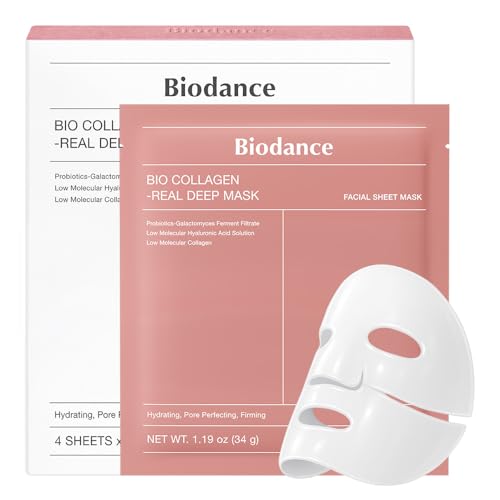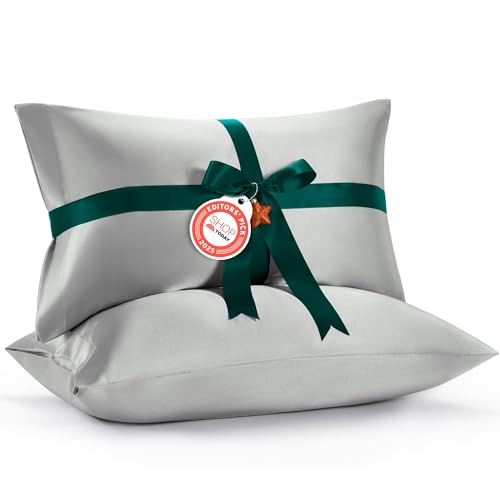When it comes to enhancing your outdoor space, choosing between pavers and flagstone can be a tough decision. The cost factor often plays a significant role in this choice. In our article, we’ll delve into the question: Are pavers or flagstone more expensive?

Pavers, known for their durability and versatility, offer a wide range of design options at varying price points. On the other hand, flagstone, with its natural beauty and unique appeal, comes with its own set of cost considerations. By comparing the expenses associated with both options, we can help you make an informed decision that aligns with your budget and aesthetic preferences.
Join us as we explore the world of outdoor landscaping and break down the costs of pavers versus flagstone, guiding you towards the choice that best suits your needs.
Understanding Pavers and Flagstone
Definitions and Characteristics
When working with clients to enhance their outdoor spaces, we often discuss the use of pavers and flagstone. Pavers are man-made concrete blocks or bricks with various shapes and patterns, offering a wide range of design options to complement different landscaping styles. On the other hand, flagstone is a natural sedimentary rock that provides a rustic and charming appearance to outdoor areas.
Pavers are known for their durability, as they are manufactured to withstand different weather conditions and heavy foot traffic. With pavers, we have the flexibility to create intricate designs and patterns that suit our client’s preferences. In contrast, flagstone boasts a unique appeal due to its natural variations in color and texture, adding a touch of organic beauty to any landscape design.
Common Uses in Landscaping
In our landscape design projects, we commonly use pavers for patios, walkways, and driveways due to their versatility and strength. Pavers offer a uniform look that can be tailored to match modern or traditional outdoor settings. On the other hand, flagstone is often employed for creating natural-looking pathways, stepping stones, or retaining walls, blending seamlessly with the surrounding environment.
Understanding the characteristics and common uses of both pavers and flagstone allows us to recommend the most suitable option based on our client’s budget and aesthetic preferences. By carefully assessing the requirements of each project, we help our clients make informed decisions to enhance their outdoor spaces while balancing cost and visual appeal.
Initial Costs of Pavers Versus Flagstone
As landscape designers, we understand the importance of considering initial costs when selecting materials for outdoor projects. Let’s explore the price differences between pavers and flagstone to help you make well-informed decisions for your landscaping needs.
Price Range of Pavers
When it comes to pavers, the initial cost typically ranges from $3 to $10 per square foot. This price can vary depending on the type of paver chosen, such as concrete, brick, or natural stone. Concrete pavers are generally more cost-effective, while natural stone pavers like travertine or bluestone tend to be on the higher end of the price spectrum.
Price Range of Flagstone
In contrast, flagstone is known for its natural beauty but comes at a higher initial cost compared to pavers. The price of flagstone ranges from $15 to $30 per square foot, making it a premium choice for outdoor projects. Varieties like sandstone, limestone, and slate contribute to the cost variations, with some flagstones priced even higher for unique colors or patterns.
Factors Affecting the Cost
Several factors can influence the cost of both pavers and flagstone. One key element is the intricacy of the design. Complex patterns or custom cuts may increase the overall cost of installation for both materials. Additionally, accessibility to the project site, labor costs, and the need for base preparation can impact the total expenses involved.
By understanding the initial costs of pavers and flagstone, along with the factors that contribute to pricing variations, we can work together to create a landscape design that not only meets your aesthetic preferences but also aligns with your budget constraints.
Installation Considerations
DIY Versus Professional Installation
When it comes to installing pavers or flagstone, we often consider whether to tackle the project ourselves or hire professionals. While DIY installation can lower initial costs, we should note that it may require significant time, effort, and expertise. We must possess the skills to excavate, level the base, apply proper drainage, and ensure precise placement of each unit.
On the other hand, opting for professional installation guarantees a seamless process and high-quality outcome. Professionals have the necessary tools, experience, and know-how to complete the project efficiently. Their expertise can prevent issues like uneven surfaces, poor drainage, or premature settling, ensuring we get a durable and visually appealing outdoor space.
Installation Time and Labor
We should also consider the time and labor involved in installing pavers versus flagstone. Pavers typically require less labor-intensive installation compared to flagstone. Their uniform shape and size make for a quicker laying process, reducing the overall installation time.
In contrast, flagstone installation can be more time-consuming due to its irregular shapes and varying thicknesses. Each piece needs to be carefully placed to create a cohesive pattern, demanding more attention to detail and precision during installation. This intricate process can extend the project timeline, especially for larger areas or complex designs.
Understanding the differences in time and labor requirements between pavers and flagstone installations can help us make an informed decision based on our project scope, timeline, and desired aesthetic outcome.
Long-Term Value and Durability
As landscape designers, we understand that considering the long-term value and durability of materials is crucial when planning outdoor projects. Let’s delve into how maintenance, repairs, lifespan, and resale value play a vital role in choosing between pavers and flagstone for your landscaping needs.
Maintenance and Repairs
When it comes to maintenance and repairs, pavers and flagstone have distinct characteristics. Pavers are generally easier to clean and maintain due to their uniformity and the ability to replace individual pieces if damage occurs. Simple tasks like sweeping and occasional pressure washing can keep pavers looking fresh. In contrast, flagstone requires more delicate care as it is a natural stone that can be susceptible to staining and erosion. Regular sealing and cleaning with specific stone-safe products are necessary to preserve the beauty of flagstone pathways and patios.
« Discover the Ultimate Guide to Free Pavers in Brisbane – Unleash Your Creativity 🔥 Revealed: Ultimate Guide on When to Seal Pavers After Installation! Don’t Miss Out! 🔥 »
In terms of repairs, pavers offer convenience by allowing targeted fixes for damaged areas without affecting the overall design. On the other hand, repairing flagstone may involve more intricate work to match the existing pattern and ensure a seamless look. Understanding these maintenance and repair differences can help you choose the material that aligns with your maintenance preferences and capabilities.
Lifespan and Resale Value
Considering the lifespan and resale value of your outdoor investment is essential for homeowners. Pavers are known for their durability and can withstand heavy foot traffic and harsh weather conditions, making them a long-lasting option for outdoor spaces. Properly installed and maintained pavers can last for decades, offering homeowners peace of mind and a solid investment in their property.
On the other hand, flagstone, when properly cared for, can also stand the test of time and develop a beautiful patina over the years. While flagstone may require more upkeep compared to pavers, its natural charm and unique variations can add value to your property. When it comes to resale value, both pavers and flagstone are attractive features that can enhance the aesthetic appeal of outdoor areas and increase the overall value of your home.
Understanding the maintenance requirements, repair options, lifespan, and resale value of pavers and flagstone can guide you in making an informed decision that aligns with your landscaping goals and budget considerations. Whether you prioritize ease of maintenance, long-term durability, or resale potential, selecting the right material is a critical step in creating a lasting and visually appealing outdoor space.
Aesthetic Appeal and Design Versatility
Visual Impact in Landscape Design
When considering the aesthetic appeal of pavers versus flagstone in landscape design, we find that both materials offer unique visual impacts. Pavers come in a wide range of colors, shapes, and textures, allowing for intricate patterns and designs to enhance outdoor spaces such as patios and driveways. These versatile options provide endless creativity, making it easier to achieve a customized look that complements the overall design of the property.
On the other hand, flagstone boasts a natural and rustic charm that adds a timeless elegance to pathways and retaining walls. Its earthy tones and irregular shapes create a more organic feel, blending seamlessly with garden surroundings. While pavers offer a contemporary and structured appearance, flagstone can contribute to a more relaxed and naturalistic landscape design.
Flexibility in Patterns and Layouts
In terms of flexibility in patterns and layouts, pavers offer greater versatility compared to flagstone. With pavers, we have the freedom to create intricate designs like herringbone, basket weave, or circular patterns that add visual interest and sophistication to outdoor spaces. The ability to mix and match different paver styles and colors allows for endless customization, making it easier to achieve specific design goals.
Flagstone, on the other hand, is known for its irregular shapes and natural look, limiting the design options to more organic layouts. While flagstone provides a charming and rustic appeal, the design choices are somewhat restricted compared to the varied patterns that pavers can offer. However, the natural beauty and authenticity of flagstone can create a unique and timeless design that enhances the overall aesthetic of the landscape.
Additional Costs to Consider
Preparatory Materials and Surface Treatments
When considering the overall expenses involved in choosing between pavers and flagstone for your outdoor landscaping project, it’s crucial to account for the preparatory materials and surface treatments required. For both pavers and flagstone, the preparatory phase typically involves excavation, leveling, and the installation of a base material like sand or gravel to ensure a stable foundation for the surface material. Additionally, surface treatments such as sealants or protective coatings may be necessary to enhance the durability and longevity of the chosen material.
Tools and Equipment for Installation
Another aspect to factor into the cost comparison between pavers and flagstone is the tools and equipment needed for installation. Installing pavers often requires specialized tools such as a compactor for compacting the base material, a wet saw for cutting pavers to fit around edges or curves, and a leveling tool for ensuring a uniform surface. On the other hand, laying flagstone typically involves tools like a masonry hammer for splitting stones, a grout float for filling the gaps between stones, and a level for maintaining evenness during installation.
By considering the additional costs associated with preparatory materials, surface treatments, tools, and equipment for installation, we can provide a more comprehensive overview of the financial implications of choosing between pavers and flagstone for your landscaping project. These considerations play a crucial role in ensuring that your outdoor space not only looks beautiful but also withstands the test of time with proper preparation and installation techniques.
Conclusion
In weighing the costs of pavers versus flagstone for your outdoor project, it’s clear that both options come with their own price considerations. While pavers may offer intricate designs and easy installation, flagstone provides a natural aesthetic that can enhance your outdoor space. Remember, additional costs such as preparatory materials and tools need to be factored in when making your decision. By understanding the financial aspects of each choice, we can create beautiful and enduring outdoor landscapes that reflect our unique style and preferences.










